Introduction
The Byzantine Empire arose not merely as a political continuation after the collapse of the Western Roman Empire in 476 CE, but as a strategic restructuring of power designed to maintain the dominance of entrenched elite classes amid shifting historical conditions. While inheriting Roman institutions of governance, law, and culture, the primary function of these traditions was to legitimize and sustain a centralized authority that protected the interests of a small, privileged ruling class. This class comprised aristocratic landowners, bureaucratic officials, and the imperial court, whose wealth and power depended fundamentally on the exploitation of the majority—the peasants, artisans, laborers, and urban populations—whose labor underpinned the empire’s economy and social stability.
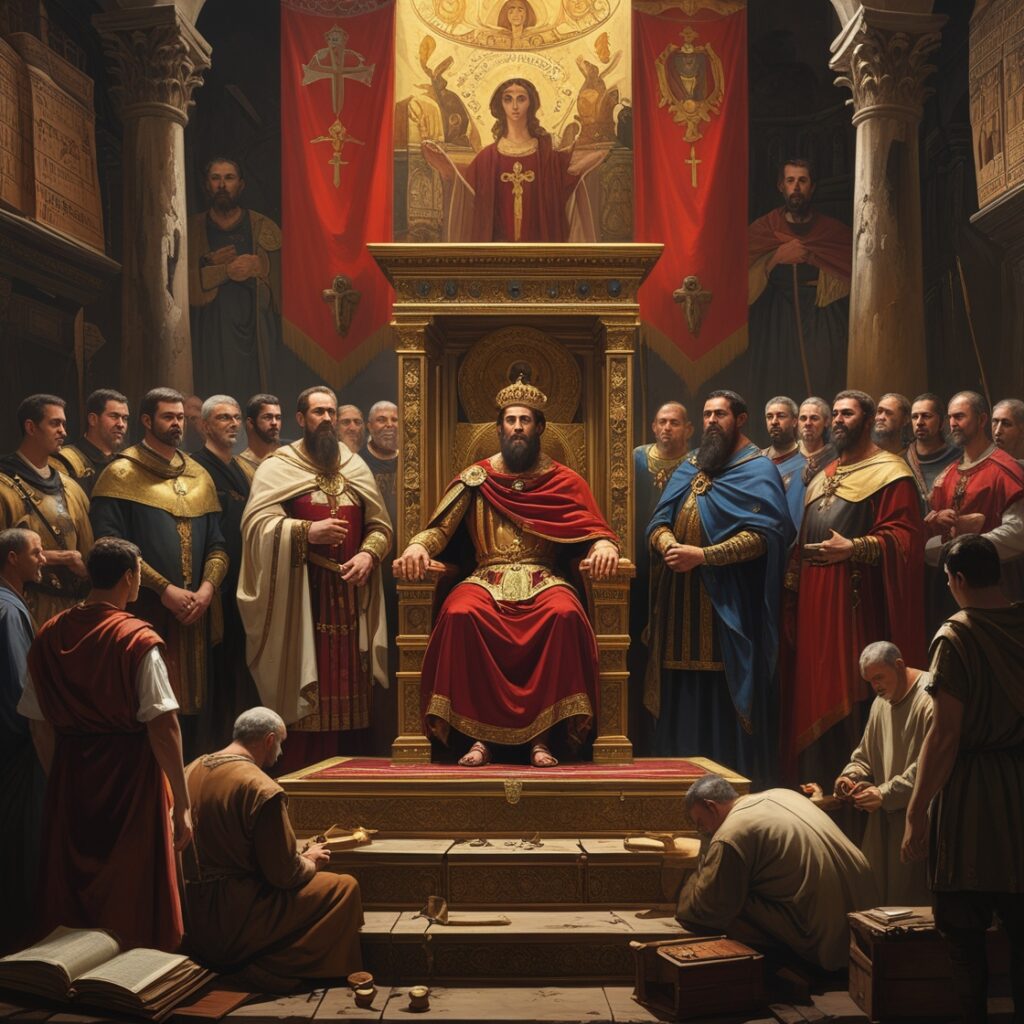
In this context, Emperor Justinian I (r. 527–565 CE) was not simply a restorer of Roman greatness but a key agent in reinforcing a hierarchical social order through legal reform, military conquest, and ideological consolidation. His monumental codification of Roman law was less about preserving history than about securing property relations and social divisions that privileged the few. Similarly, his architectural patronage and religious policies served to integrate state power with spiritual authority, suppress opposition, and perpetuate the ruling class’s dominance under the guise of imperial glory.
Background of the Byzantine Empire
The establishment of Constantinople in 330 CE by Emperor Constantine was a deliberate pivot of imperial control toward the East, designed to safeguard the ruling elite’s interests amidst the fragmentation of Western authority. Constantinople’s geographic positioning at the intersection of continents enabled the ruling class to control crucial trade routes, extract wealth, and administer an expansive, diverse population effectively. This city was not simply a capital; it was a fortress of elite economic and political power.
The Byzantine state represented a complex fusion of inherited Roman legal frameworks, Greek cultural elements, and the institutionalized influence of Christianity. This amalgamation functioned as a powerful ideological apparatus to justify elite dominance. Roman law codified the economic and social hierarchies essential for controlling production and property, Greek intellectual heritage lent prestige and continuity to ruling elites, and Christianity became a state instrument to naturalize obedience and hierarchy through divine sanction.
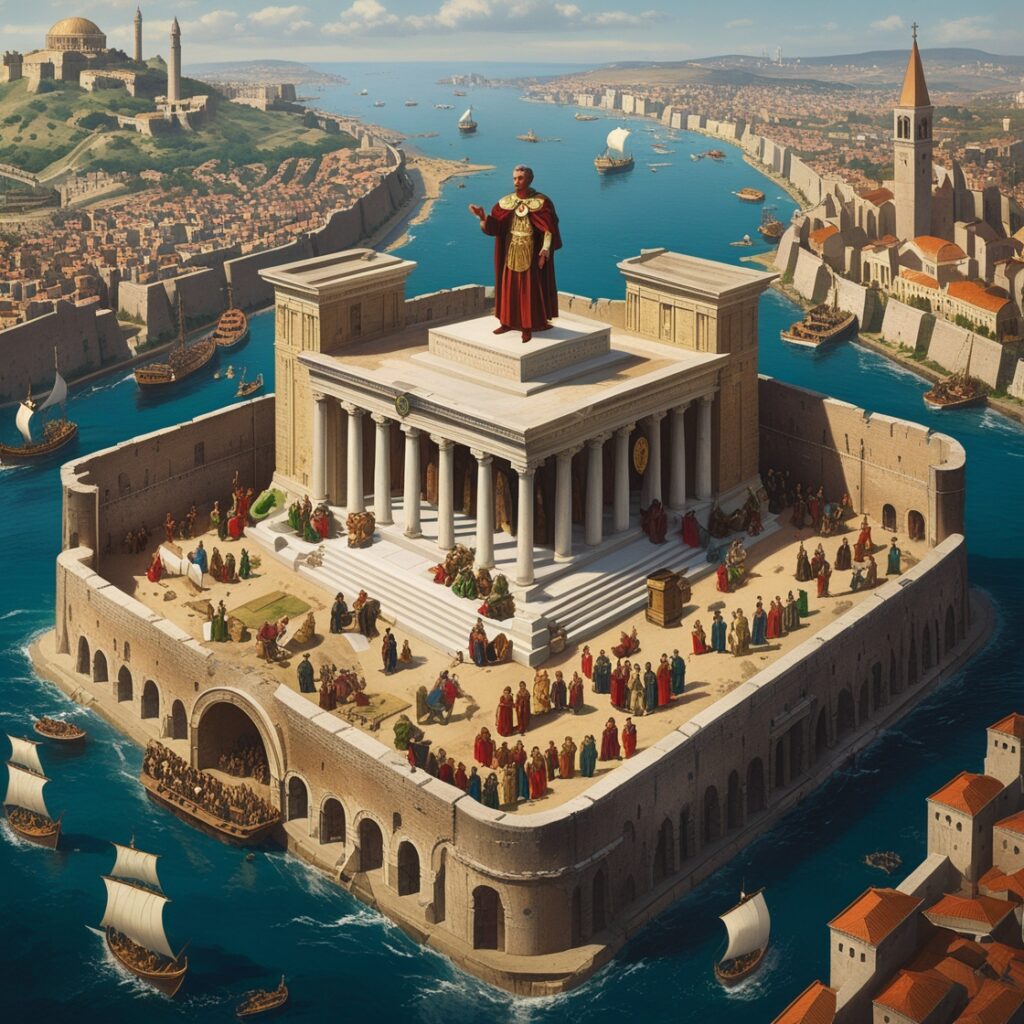
Despite the pressures of external invasions and internal unrest, the Byzantine Empire endured for nearly a millennium. Its survival was less a result of cultural brilliance or military prowess alone and more the consequence of the ruling classes’ capacity to adapt institutions to reorganize labor, suppress resistance, and maintain control over economic resources and social relations.
Rise of Justinian I
Justinian’s ascent highlights the ways in which imperial structures could integrate and elevate select individuals from modest origins while preserving the existing class order. Emerging from a peasant background in the Balkans, Justinian’s rise was made possible through elite patronage networks, underscoring the system’s ability to co-opt upwardly mobile figures who ultimately reinforced the interests of the ruling strata rather than challenging them.
Upon taking power in 527 CE, Justinian inherited an empire beset by social tensions and external threats. His declared ambition to restore Roman unity was intrinsically tied to the political imperative of consolidating imperial authority and securing the economic base that sustained elite power. His military campaigns and legal reforms were not acts of nostalgia but calculated efforts to reimpose centralized control over territories, populations, and resources—ensuring the ruling class’s continued supremacy.
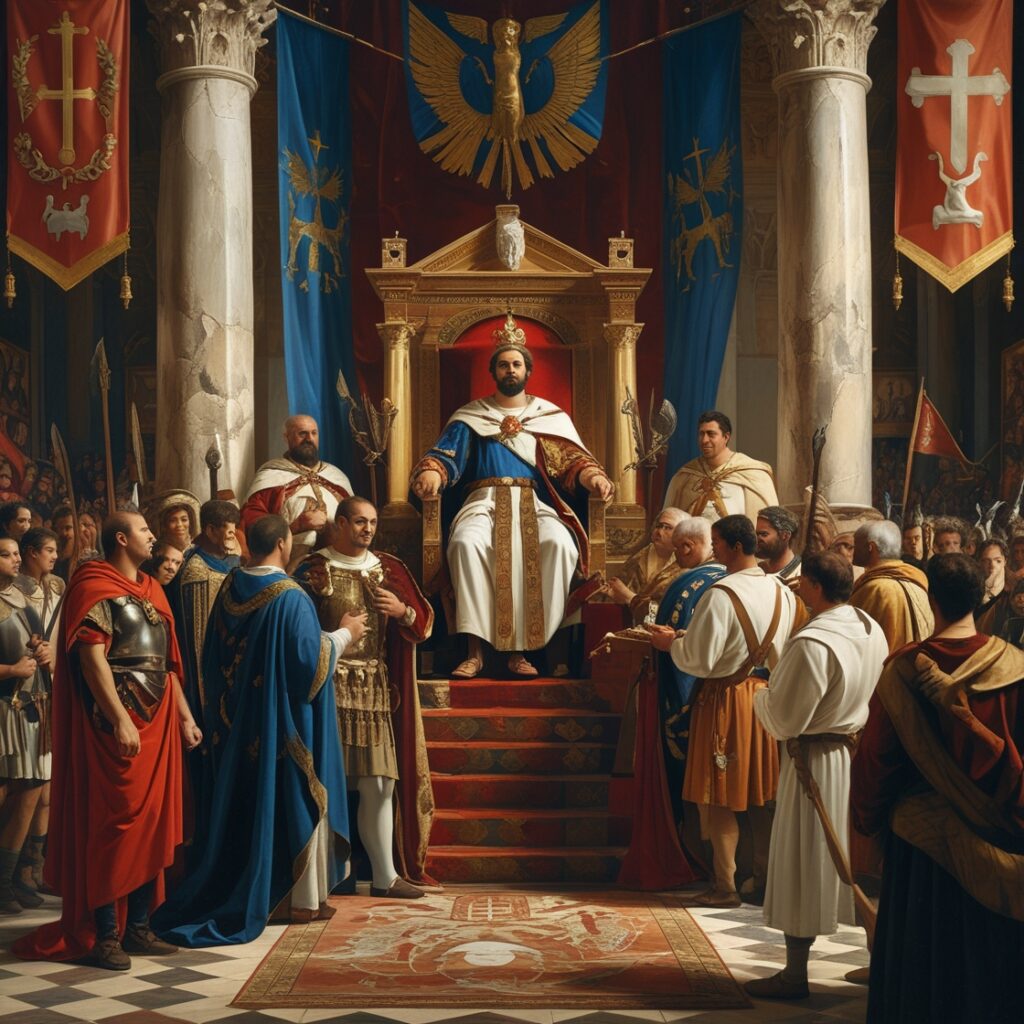
Justinian’s Military Campaigns: The Reconquest of the West
The reconquest of lost western provinces under Justinian was driven by economic motivations as much as by a desire for imperial prestige. The campaigns led by General Belisarius to reclaim North Africa, Italy, and parts of southern Spain served to restore control over valuable land, resources, and trade networks that had slipped beyond imperial reach.

While these conquests temporarily expanded the empire’s borders, they imposed enormous costs on the population. The financial burden of war was borne disproportionately by lower social strata—peasants conscripted into armies, urban dwellers taxed heavily, and local economies devastated by prolonged conflict. Meanwhile, the aristocracy and imperial bureaucracy reaped the benefits through regained revenues and reinforced political dominance. Thus, the reconquests were strategic acts to strengthen the material foundations of elite power, emphasizing the use of military force to consolidate economic control and suppress centrifugal forces that threatened centralized rule.
Legal Legacy: Corpus Juris Civilis
Justinian’s codification of Roman law, the Corpus Juris Civilis, was a cornerstone of his political strategy, serving to stabilize the social order and fortify state authority. Far from a neutral preservation of legal tradition, this comprehensive legal corpus standardized laws that protected private property, institutionalized patriarchal authority, and entrenched social inequalities.
By delineating clear legal privileges for landowners and the ruling elite while imposing obligations and restrictions on peasants, slaves, and lower classes, the code operated as a formalized instrument of control. It regulated economic relations and labor, legitimized social stratification, and ensured that justice served the maintenance of elite interests rather than universal equity.
This legal framework not only administered the empire’s day-to-day governance but also functioned ideologically to justify and naturalize the prevailing power relations under the appearance of rational law and order.
Architectural and Cultural Revival
The cultural projects under Justinian, including the grand construction of the Hagia Sophia, were deeply political acts aimed at manifesting imperial power and ideological unity. The architectural grandeur of the church projected the emperor’s divine right to rule and symbolized the fusion of religious and state authority. The blending of classical engineering with Christian symbolism communicated the continuity of imperial dominance and reinforced obedience.
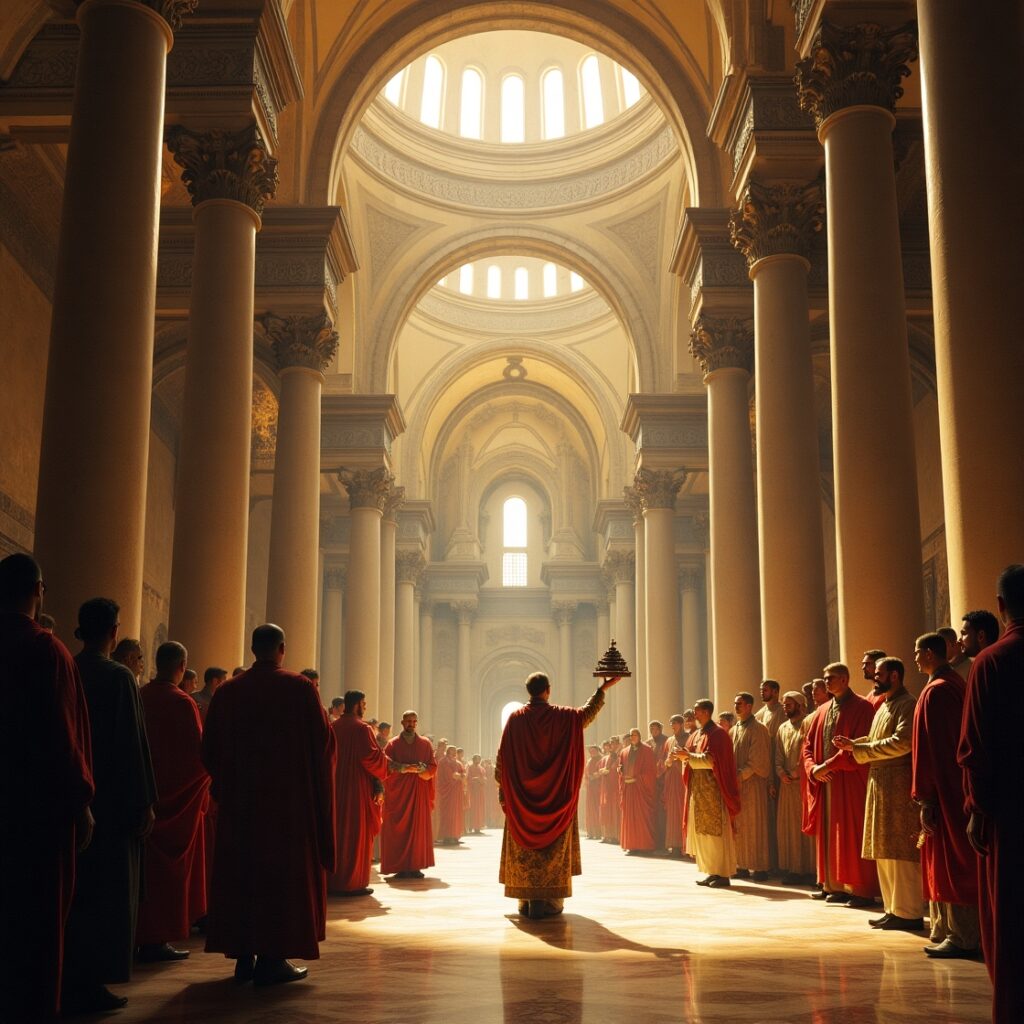
Justinian’s patronage of classical learning and artistic traditions was similarly selective and strategic. By preserving and promoting specific elements of Greco-Roman culture, the ruling elite curated a historical narrative that legitimized their rule and obscured the exploitative realities of the social order. Marginalized were those ideas or practices that might inspire resistance or question hierarchical dominance.
The continued use of Latin as an official language, despite the Greek vernacular’s popularity, served as a cultural boundary marker, emphasizing the elite’s distinct status and their claim to historical legitimacy.
Religious Policies and Role in Christianity
Religion under Justinian was harnessed as a vital instrument of social control, tightly interwoven with imperial governance. Orthodox Christianity became the official ideology, a unifying doctrine that legitimized the emperor’s rule as divinely sanctioned and justified the social hierarchy.
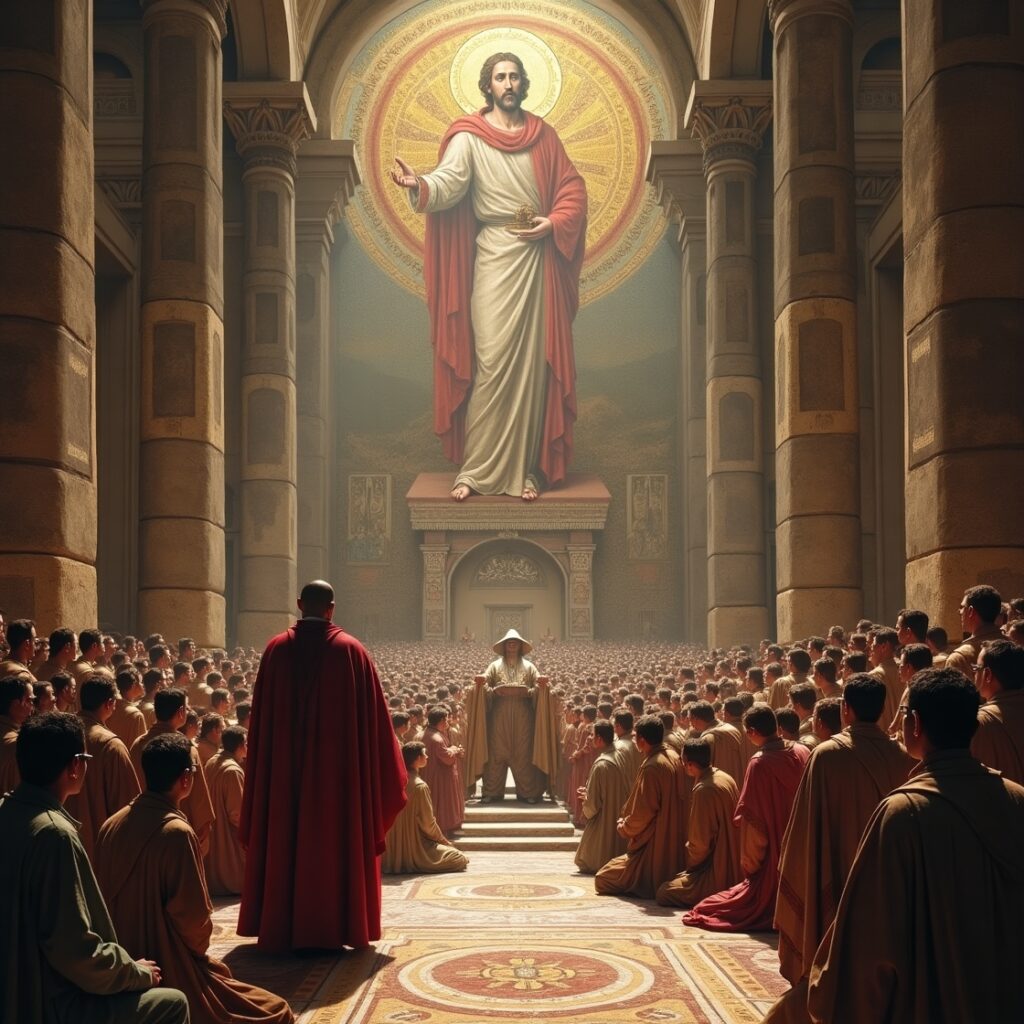
Alternative religious and philosophical traditions were aggressively suppressed, as seen in the closure of the Academy of Athens and persecution of dissenting sects. These measures were less about spiritual purity and more about eliminating ideological threats that could destabilize the ruling order.
By controlling church leadership and doctrine, Justinian ensured that religious institutions functioned as extensions of imperial authority, reinforcing obedience among the populace and normalizing the existing power relations.
Administrative and Bureaucratic Reforms
Justinian’s reforms in administration and taxation enhanced the state’s capacity to extract surplus from its subjects, critical for funding military campaigns, maintaining the bureaucracy, and executing monumental projects that projected elite power. The bureaucratic apparatus was a means of managing labor, regulating production, and suppressing resistance.
Far from a neutral system, this centralized bureaucracy embodied the interests of the ruling class, controlling social life and economic activity to preserve the empire’s hierarchical structure.
The Nika Riots and Domestic Challenges
The Nika Riots of 532 CE exposed the underlying contradictions and tensions within Byzantine society. The uprising was rooted in popular grievances over oppressive taxation, corruption, and the widening gulf between the ruling class and the masses.
The elite’s brutal suppression of the revolt revealed their reliance on coercive violence to maintain social order. The subsequent grand reconstruction efforts, including the Hagia Sophia, were not merely urban renewal projects but demonstrations of imperial authority designed to awe the populace and reassert elite dominance.
This episode illustrated the fragile balance maintained by the ruling class between coercion and spectacle to govern a society rife with economic and social inequality.
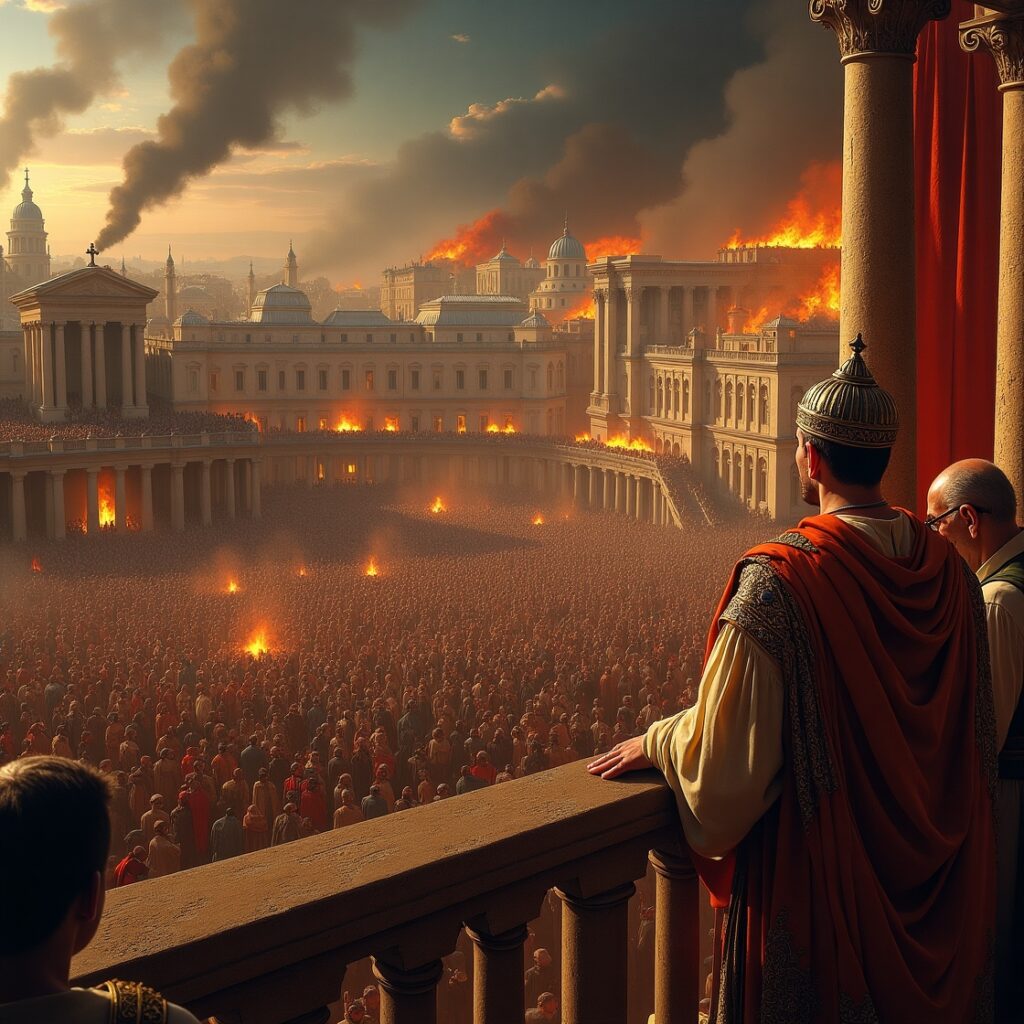
Preservation of Roman Identity in a Changing World
Byzantine rulers’ insistence on their Roman imperial identity served as a powerful ideological tool to legitimize continued elite dominance in a rapidly evolving political landscape. Claiming direct descent from Rome reinforced their authority and framed their rule as a continuation of a universal empire.
This constructed identity helped unify a diverse population under a common political and cultural banner while justifying the maintenance of existing social hierarchies.
Through selective preservation and adaptation of Roman law, religion, and culture, the Byzantine Empire became a bridge transmitting a ruling-class legacy that shaped future political and social formations in Europe.
Long-Term Impact
The Byzantine Empire’s preservation of Roman law, philosophy, architecture, and religious doctrine was not a passive inheritance but an active effort to sustain the ideological and institutional frameworks that upheld elite power.
This legacy passed through Islamic scholars and later re-entered Europe during the Renaissance, influencing the development of legal and political institutions that continued to organize societies around hierarchical class relations and centralized authority.
Thus, the empire played a crucial role in maintaining and disseminating systems of control and domination that would inform the structures of power for centuries to come.
Conclusion
Justinian’s reign was a defining chapter in the Byzantine Empire’s history, characterized by a determined effort to reassert and expand elite dominance through military, legal, cultural, and religious reforms. While his territorial ambitions were fleeting, the lasting impact of his legal codification and cultural patronage secured the empire as the custodian of Roman heritage.
This heritage was far from neutral; it was a carefully constructed apparatus for preserving social inequality and imperial authority. Through Justinian’s leadership, the Byzantine state ensured the survival of a social order based on the control of labor and resources by a privileged few, shaping the trajectory of medieval and modern civilization alike.
Frequently Asked Questions (FAQs)
1. Why is Justinian considered a significant figure in the Byzantine Empire?
Justinian is significant not merely for his personal achievements but for how he reinforced centralized authority, expanded imperial control, and codified a legal system that safeguarded the privileges of the elite while subordinating the laboring classes. His rule illustrates how power could be maintained through law, war, religion, and cultural symbols.
2. What was the true purpose behind Justinian’s legal reforms?
Though often celebrated as preserving Roman law, the Corpus Juris Civilis primarily served to standardize control over property, labor, and social order. It codified class divisions and legitimized the dominance of ruling elites under the guise of rational governance.
3. How did Justinian’s military campaigns affect common people?
While elites gained prestige and reasserted control over lost territories, the wars devastated peasant communities, destroyed infrastructure, and drained resources. The burdens of conquest—including taxation, conscription, and displacement—were borne primarily by the lower classes.
4. Was the Byzantine preservation of Roman culture a neutral act?
No. The preservation of Roman traditions was highly selective, emphasizing elements that reinforced imperial ideology and elite control. Culture was curated to serve as a tool of legitimacy and continuity for the ruling class.
5. How did religion function under Justinian’s rule?
Religion was closely tied to state power. Orthodox Christianity became an ideological tool to enforce obedience, suppress dissent, and justify social hierarchy. Religious uniformity helped consolidate state authority and marginalize competing worldviews.
6. What do the Nika Riots reveal about Byzantine society?
The Nika Riots exposed the deep grievances of the lower classes under imperial exploitation. The violent suppression of the uprising showed how the state-maintained control through coercion and symbolic reconstruction, rather than addressing root inequalities.